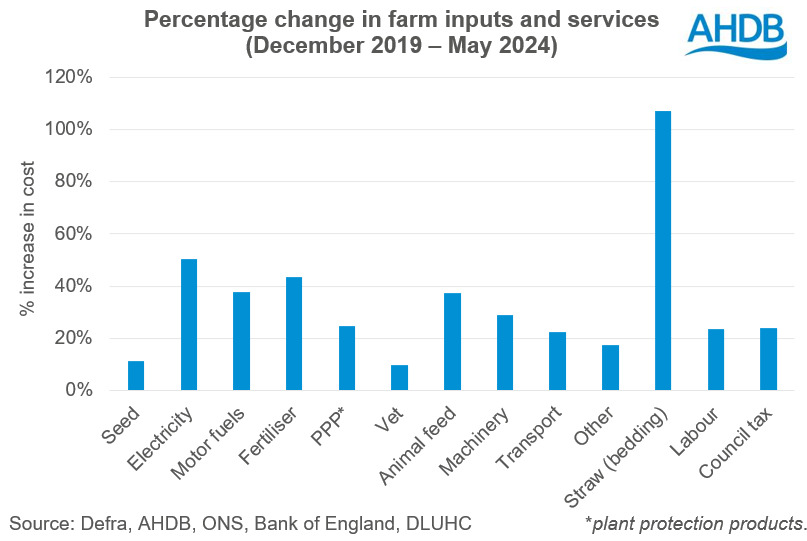
Posted on October, 2, 2024 at 09:18 pm
The funding pot for agriculture in the UK has remained constant at £2.4 billion since the 2019-24 parliament. As we approach the first budget of the newly elected government, we examine how farming costs have changed in line with inflation and what this means for the agricultural budget in real terms going forward.
For cereals and mixed farms, with fertiliser and machinery related costs the main drivers, input prices increased by 43% from December 2019 to May 2024. This compares with pig farms at 54%, dairy farms at 44%, and beef and sheep farms at 39%.
Consumer price inflation is calculated based on a ‘basket of goods’ representing goods and services consumed by a ‘typical’ household. In this analysis, our ‘basket of goods’ is based on typical costs incurred by farms and the percentage change for those costs from December 2019 to May 2024.

During the 2019 to 2024 parliament, the impact of £2.4 billion funding pot has been limited by two factors – underspend and inflation. Over the past three financial years (2021/22 to 2023/24), data shows an underspend by the government. However, the latest NAO report on the Farming and Countryside Programme states that Defra expects to spend £2.9 million in 2024/25.

While farm input costs increased by more than 40%, the total funding pot for agriculture has remained constant at £2.4 billion since 2019, thus eroding its value in ‘real’ terms (i.e. taking inflation into account).
To account for the effect of inflation, the farming budget would need to increase by 44% to £3.4 billion. This is without considering any other spending required to support the farming sector.
Source: AHDB